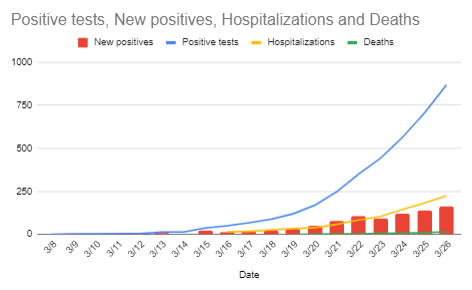If a person at a homeless shelter tested positive for COVID-19, about half of the organizations that oversee shelters wouldn’t know how to respond.
Less than half of them have received any training or education on COVID-19, the respiratory disease caused by the new coronavirus.
These and other findings appeared in a recent report, “Double Jeopardy: The Coronavirus and Homelessness in Ohio.” The report was authored by Barbara Poppe, who served as the executive director of the U.S. Interagency Council on Homelessness under President Barack Obama and now works in private practice advising on housing policy. Ohio State University PhD candidate Angela Hetrick co-authored the report.
After analyzing survey results from 23 of Ohio’s 25 Continuums of Care (CoCs) — regional bodies that oversee homeless services in cities and regions — the report states there’s a “critical lack of guidance, resources and capacity” for Ohio’s homeless services to weather the pandemic.
“There is a yawning gap between CDC guidance on COVID-19 and the reality of life for people who are homeless and the agencies that serve them,” the report states.
In an interview, Poppe said the most jarring finding was that most CoCs had no space in mind for people who test positive or exhibit symptoms of the disease and are awaiting lab results.
“For me that’s the scariest part of this, that there isn’t any place for them to go to,” she said.
People who experience long bouts of homelessness exhibit high rates of chronic lung illness, research shows. This, coupled with the crowded nature of shelters, leaves the population especially vulnerable to the outbreak.
Ohio’s homeless population is an elusive number. Federal data, measured in a one-night count, shows there are 12,100 homeless Ohioans, about 10,000 of whom are sheltered. However, state data, measured by the number of people who accessed homeless services, puts the number closer to 70,100 homeless people.
There are 300 congregate facilities in the state, according to the report. Many have shared sleeping rooms, lounge areas, restrooms and showers.
Preventative strategies like social distancing and mitigative strategies like isolating and quarantining sick people are simply not possible in these shelters, per the report.
“There is an immediate need to create additional spaces at existing shelter and transitional programs by repurposing other parts of the facility or identifying alternative and additional shelter sites or spaces,” it states.
Other problems include a lack of “realistic guidance” on how to screen and refer people exhibiting symptoms of the disease, inadequate sanitation and hygienic supplies, and staffing shortages.
Given the lack of access to health care among people who are homeless, many rely on emergency rooms for treatment. The report states homeless patients stay 36% longer per admission on average than other patients, even when accounting for things like substance abuse and mental illness rates.
One CoC survey respondent said shelters are being instructed to check the temperature of anyone coming in, but neither the local hospital nor county commission can offer any extra thermometers. Another said there’s just no guidance for what to do if someone gets sick.
“We simply aren’t sure how and where to quarantine them if it’s more than a few people,” the respondent said.
As of 2 p.m. Thursday, the Ohio Department of Health confirmed 867 Ohioans have tested positive for COVID-19, though experts believe the infected population is much higher. Fifteen people have died, 223 have been hospitalized, 91 of whom required ICU admission.

New Ohio data:
-867 confirmed cases (163 in last 24 hours)
-223 hospitalizations (41 new)
-91 ICU admissions (16 new)
-15 deaths (5 new)

252:05 PM – Mar 26, 2020Twitter Ads info and privacy32 people are talking about this
ODH Director Dr. Amy Acton has said the department’s modelling suggests 40% to 70% of Ohioans will ultimately be infected with the coronavirus over the course of a year.
Both Acton and Gov. Mike DeWine have said plans are in the works for how to tackle the unique challenges homeless care providers face amid the pandemic but have not gone into specifics.
The report offers a solution with a steep price tag.
Over the next six months, shelters will need $108 million, according to an estimate from Poppe’s private firm.
The cost would cover 2,110 emergency beds in hotels for people currently unsheltered; nearly 3,000 beds in hotels to reduce the crowding at shelters; more than 4,700 quarantine and isolation beds; and other funds for diversion assistance to get people out of shelters.
Poppe said the bulk of this would likely come from the federal government, but state government, local governments, and philanthropic organizations will have to play a role.
In the meantime, COHHIO, a coalition of groups that focus on housing issues, has created a pandemic emergency fund to help local agencies obtain cleaning supplies, medical equipment, staffing and space. The organization put $250,000 into the fund. Other donors have brought its total up to at least $410,000. More information on the fund is available here.
For information on COVID-19 in Ohio and copies of all public health orders, you can visit the state’s coronavirus website here.
For information on how to avoid the virus, what symptoms are like and what to do if you think you’re infected, you can go to the CDC’s COVID-19 page here.
***





